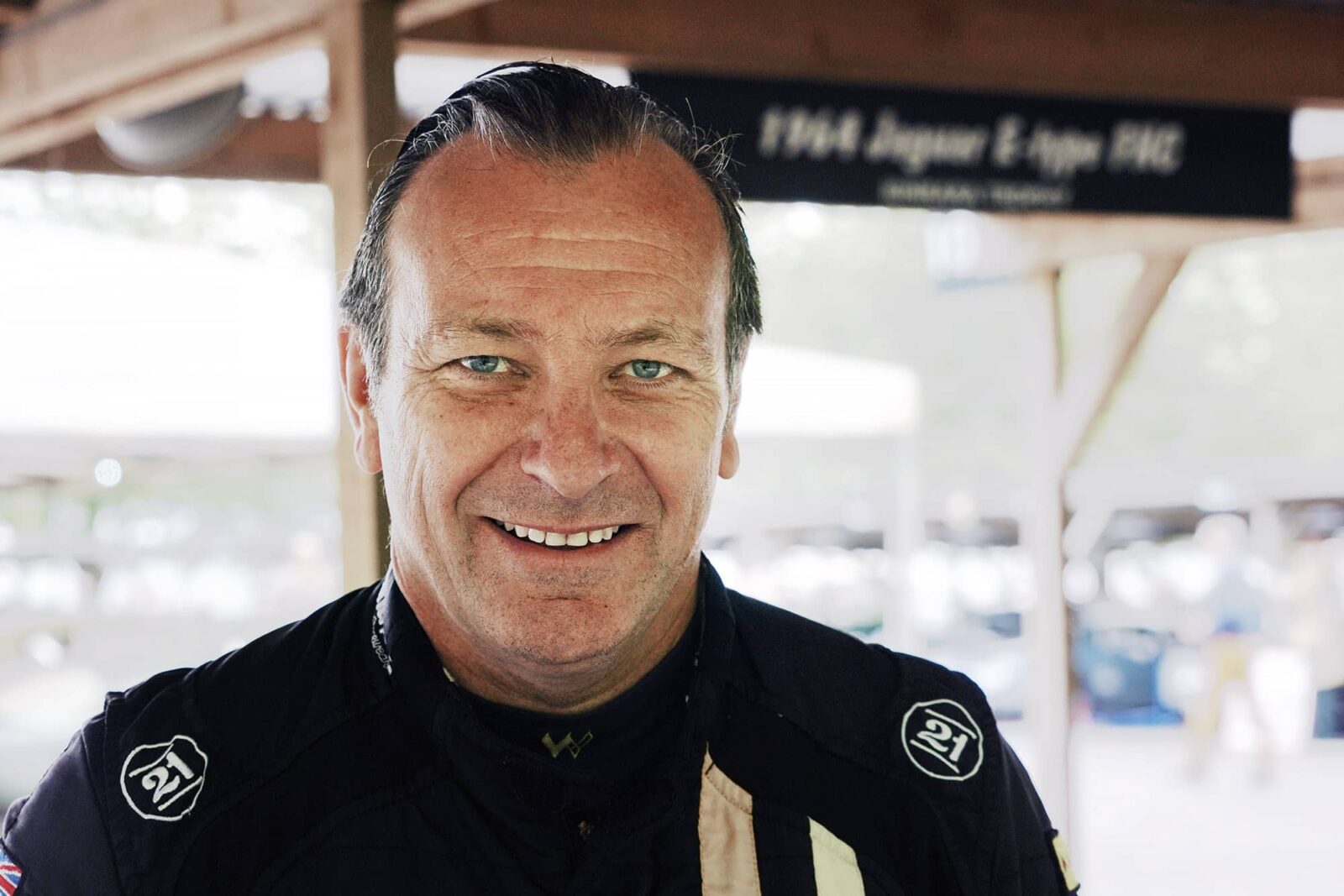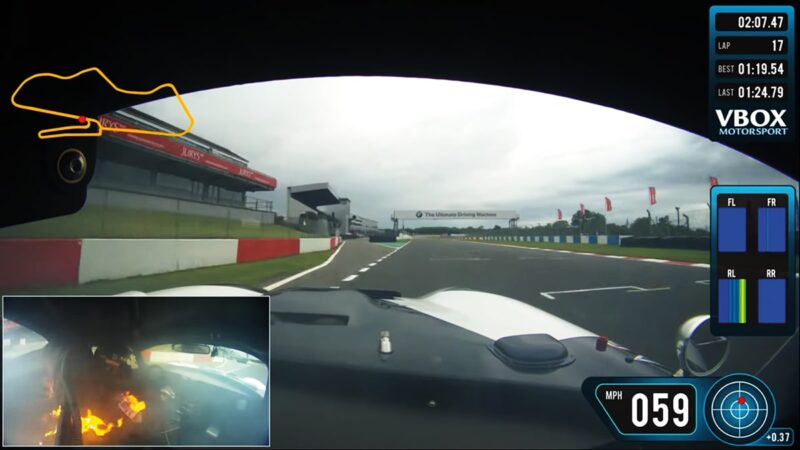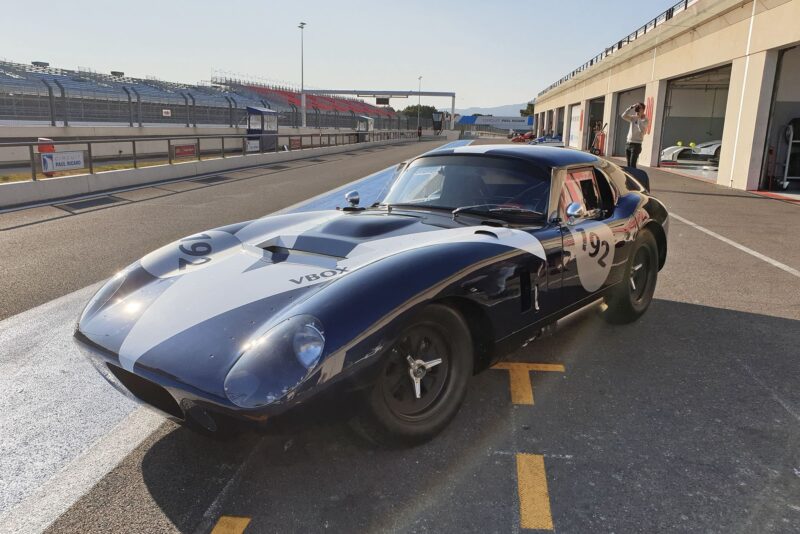Blazing saddles
An historic racing veteran, Calum Lockie has seen it all, as he tells Tom Errington

Cruising behind a safety car at Donington Park, smoke began to fill the cockpit of a £340,000 Shelby Cobra as a fire began. What happened next was anything but conventional. Calum Lockie, who has raced for over 30 years, didn’t pull off track, leaving it to the marshals. He put his foot down.
Competing in the Donington Historic Festival, Lockie pointed to the fire to make the safety car driver aware, cleared 100mph on the back straight, and powered towards the pits. It saved the car from major damage.

The Shelby on fire: Lockie’s quick to react to save the car
“It was just one of these things,” explains Lockie. “A tooth broke on the diff and it jammed the differential’s oil pump, and everything got extremely hot.
“A lot of people said: ‘Why didn’t you pull over by the marshals’ posts?’. But there was risk of it burning a lot more than it did. I thought if we get to the pits, not only do we have the fire truck right there, but I will get back quicker than they could get to me. Also, the team would have access to the car, with their very specific knowledge having built it.”
But most impressive of all? The Cobra, which Lockie races alongside owner and Racelogic managing director Julian Thomas, was repaired and on the grid at Magny-Cours just two weeks later, thanks to the work of Andy Woolf Engineering, winning the Masters Historic race by over 40 seconds and continuing a run of three wins from four races.
It capped off a successful year for Lockie, who competed in over 30 races across nine different cars, winning more than 10 of them along the way. Now his attention is on 2020.
Lockie says his plans are not yet “truly and finally confirmed”, but it’s likely he will race alongside Thomas for a fifth year, meaning further outings in a March 717 Can-Am, the Shelby Cobra and the Chevron B8 are likely, and visits to the Silverstone Classic and the Oulton Park Gold Cup are expected, too.
Lockie spent some of 2019 helping owner Mark Midgely race a Jaguar E-type that was a mere shell just three weeks before its first outing at last year’s Goodwood Revival. The car was a “bit green”, but the pair took 17th in the Kinrara Trophy. Lockie compares the experience to a cornerstone of modern racing.

From fire to victory in two weeks, this Cobra has a storied history
“You do get manufacturers coming out with new models, but it tends to be their works drivers. Porsche at Weissach, they do thousands of miles with their works drivers. You never see that before it’s put out as a ready-running machine. You do a lot of that in historic racing because a lot of it is suck it up and see. There’s less opportunity for that in modern racing.”
There is a growing trend in the historic scene, one concerning competitors. Lap times are tumbling at venues such as Goodwood as speeds are on the up – due to increasing development. While a natural consequence as owners seek to iron out unreliability in classic machines, there has also been the use of sophisticated suspension and synthetic oils.
“I think it’s an increasing concern that cars are being overdeveloped, you can never stop development,” says Lockie. “ But, if you allow it to happen [excessively], then all it does is raise the cost of competing and it’s expensive enough. There are increasing moves at Goodwood and other places, looking at how they cannot stymie the racing but prevent overdevelopment. It’s about preventing someone coming in with huge money, just throwing everything at it, and then disappearing into the distance.”
